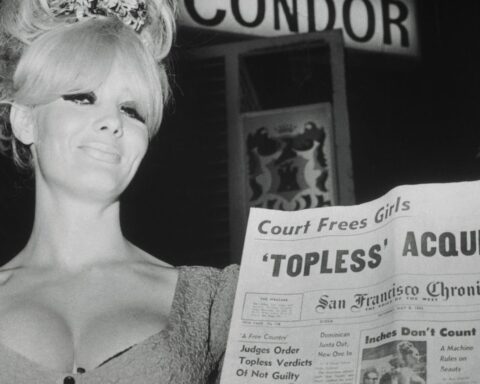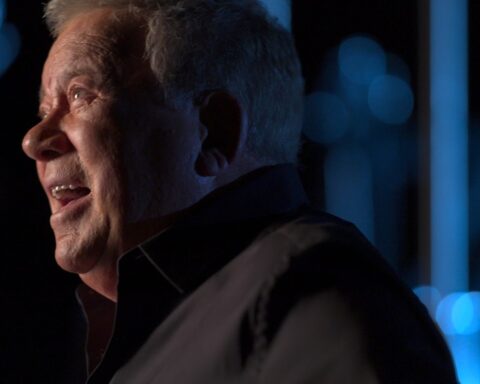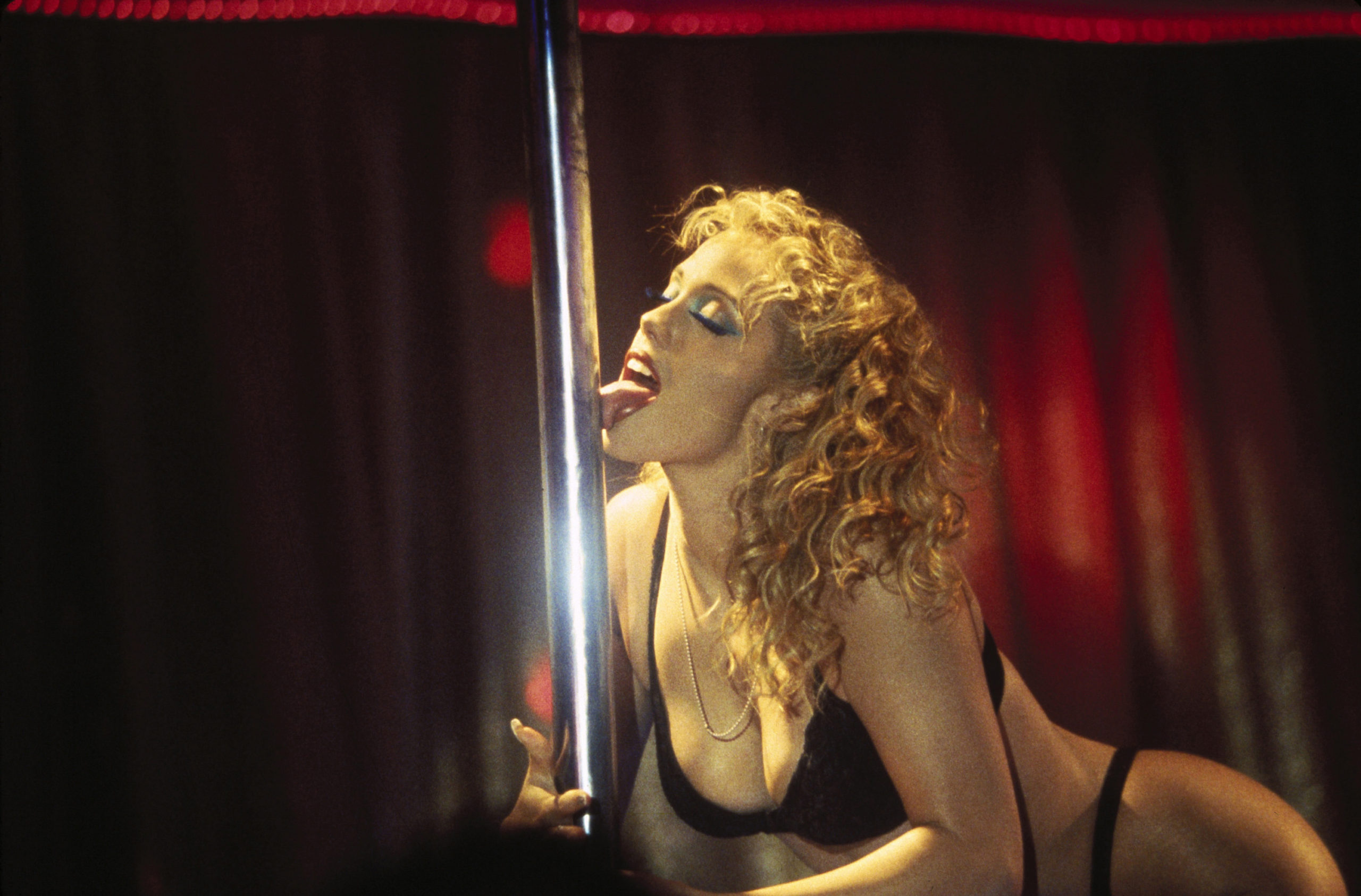Halston
(USA, 105 min.)
Dir. Frédéric Tcheng
They may have erased his tapes, but fashion icon Halston (born Roy Halston Frowick) receives a slick record in this new documentary that bears his name. Director Frédéric Tcheng (Dior & I) charts the dramatic rise and fall of the man who put American clothes on the map and built the biggest fashion empire the country had ever seen at the time. Halston is a brisk and engaging fashion doc that sizzles with celebrity gossip and jolts with Shakespearean tragedy. The film is a fascinating study of ambition as Halston climbs to the top and buckles just as he’s closest to reaching his dream of dressing every person in the USA. Featuring a number of fabulous talking heads and a who’s who of 1970s celebs in archival footage, Halston is a fashionably cut and star-studded glimpse into the life of an icon.
The doc charts Halston’s journey from sleepy Iowa, where his name was pronounced HAAAL-ston with the family drawl, to the burgeoning metropolis of New York where he revealed himself as the poshly affected Hall-ston. The vaguely transatlantic accent gives the man an aura of mystery, as does Tcheng’s novel framing of the film that sees a nameless narrator in the form of a fictional archival worker (played Tavi Gevinson) who sorts through Halston’s personal catalogue of VHS tapes. She erases and relabels each one to fulfill a request that will be later revealed. Halston might have been erased in some forms, but the film ensures his legacy—both sweet and bitter—gets its part in fashion history. Tcheng’s film re-introduces audiences to a man who might be forgotten after he was shoved out of the brand name he created.
An archival snippet from the game show What’s My Line? introduces Halston as the man who created hot pants, which, for better or for worse, made the 1970s an era of super-short leggy goodness. While the doc randomly ignores the hot pants craze otherwise, Tcheng instead frames Halston as America’s first superstar of fashion. The film portrays him as a revolutionary who made high-end fashion accessible for consumers beyond the rich and fabulous.
Halston then brings audiences to the hallowed grounds of Bergdorf’s department store in Manhattan where Halston made his name as a milliner while creating posh hats for the wealthy. His repertoire included the pillbox hat that Jackie Kennedy wore during her husband’s inauguration, and the film establishes Halston as a brand that signified an understated elegance. Class becomes an underlying conflict of the designer’s career as his ambitions demand an expansion into the wider marketplace of off-the-rack fashion.
Halston dives into the man’s designs by assembling many of his colleagues and former models who discuss his signature styles. Tcheng’s film credit’s Halston’s success to the cleanliness, simplicity, and elegance of his designs, which offered a refreshing pause between the camp of the swinging ’60s and the regrettable excess of the ’80s. Halston’s colleagues unpack the deceptive simplicity of a design to allow audiences to appreciate the seamless complexity of his work. For example, the doc highlights Halston’s signature single-seam dress, which offered an elegantly cut outfit drawn from one piece of fabric and held together by a lone line of stitching up the side. The models rave about a man who was a whiz with a pair of scissors and could throw a piece of fabric on the floor and conjure something divine in mere moments.
The film features several of Halston’s models and friends including Oscar-winner Liza Minnelli, who offers one of the film’s most heartfelt interviews when Tchneg asks about her friend’s heavy drug use. Minnelli acknowledges Halston’s shortcomings by saying that she saw how the airing of someone’s secrets tore her parents apart, so she refuses to do the same and instead offers a song. Others, like Marisa Berenson, Karen Bjornson, Pat Cleveland, and filmmaker/costumer designer Joel Schumacher all speak to the highs and lows of Halston’s artistry, which could be equally inspiring and exhausting. An extensive archival interview with Halston’s jewelry designer Elsa Perreti is especially illuminating and entertaining with equal measures.
Where the film really excels, however, is when Tcheng gets into the nitty gritty of the business of the fashion scene. These sequences look beyond the clothes and beyond the freedom of self-expression afforded by the liberation of the 1970s. Halston explores how an artist can be at odds with the machine that makes him. His story is an ironic tale of a billionaire artist at odds with the establishment as he struggles to reconcile his artistic integrity, brand image, and ego with the cashflow that enables his success. It’s a blistering study of capitalism’s ability to destroy all beautiful things.
The film chronicles Halston’s lucrative deal with corporate conglomerate Norton Simon, the first by any brand name designer, and his gradual transformation into an overworked and demanding stress case who tyrannically ran his office like a dinner party where he blew the bank on hors d’oeuvres and flowers. As the doc digs into business of the fashion world, Tcheng unearths a great critique about the corrupting nature of capitalism as nothing is ever enough for Halston until his ambition outpaces his ability to deliver on the company’s bottom line.
The film makes a late-in-the-game introduction of Halston’s managing director Carl Epstein, who oversaw the practical execution of the brand after the designer sells his name to JC Penney, which is taken over in one of the big corporate acquisitions that typified the era. Epstein isn’t the villain of Halston, but he’s an enjoyably basic foil as he looks beyond the brand’s glamour and perhaps compromised it by failing to understand its nuances. As the narrator explores Halston’s downfall like Jed Leland inquiring into the mystery of Rosebud, Halston lets the pieces fall into place as Tcheng creates a record of history thought lost. Part of the film’s urgency is Epstein’s ignorance of the cultural value of Halston’s designs and the film is an important record of the need to see significant pieces of fashion preserved as cultural artifacts. The film lets audiences enjoy the comfort and glamour of a Halston design while showing them that there’s a lot more to the name than the clothes that bear his name today.
Halston screens at Toronto’s Inside Out LGBT Film Festival on May 29 and opens at Hot Docs Ted Rogers Cinema on Friday, May 31.













